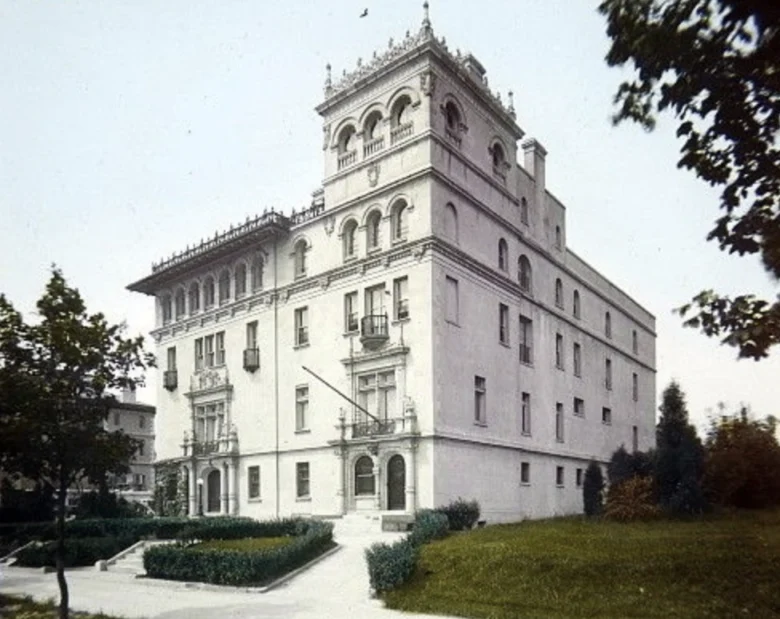For more than one hundred years, a tower has stood watch over 16th street.
Affectionately named the “birdhouse” by the building’s residents, the tower room tops the Embassy of Lithuania at 2622 16th Street. Once part of a two-building structure, the embassy now stands alone, sandwiched between the Embassy of Cuba, and a large apartment complex that stands in the place of the original building and now dwarfs one of the longest-serving diplomatic properties in Washington.
“It used to have a view of the White House,” Marijus Petrušonis, the embassy’s political counselor tells me with a shrug, as if to say, things change. What can you do?
That embassies change – their diplomats, their buildings, their country’s diplomat status – is one of the constants in Washington. But the Embassy of Lithuania has arguably seen more change than most.
Built in 1909, 2622 16th Street was commissioned by Mary Foote Henderson as part of her vision for an Embassy Row on Meridian Hill. It’s one of twelve extravagant mansions that would later become embassies on which she collaborated with her favorite architect, George Oakley Totten, and one of nine that remain.
Henderson rented the property out to diplomats of various delegations until Lithuania purchased it in 1924 for $90,000. Henderson reportedly accepted a $5000 down payment, and then refused to accept another penny, despite insistent attempts from the Lithuanian government to pay her in full. It was only after she died in 1931, that the Lithuanian government and her estate settled the affair once and for all.
2622 was modeled after the towers on her own home, dubbed the Henderson Castle, just down the way. The original castle is long gone, save for the turrets that line the sidewalk on the corner of Sixteenth and Florida; turrets that look remarkably similar to the tower room.
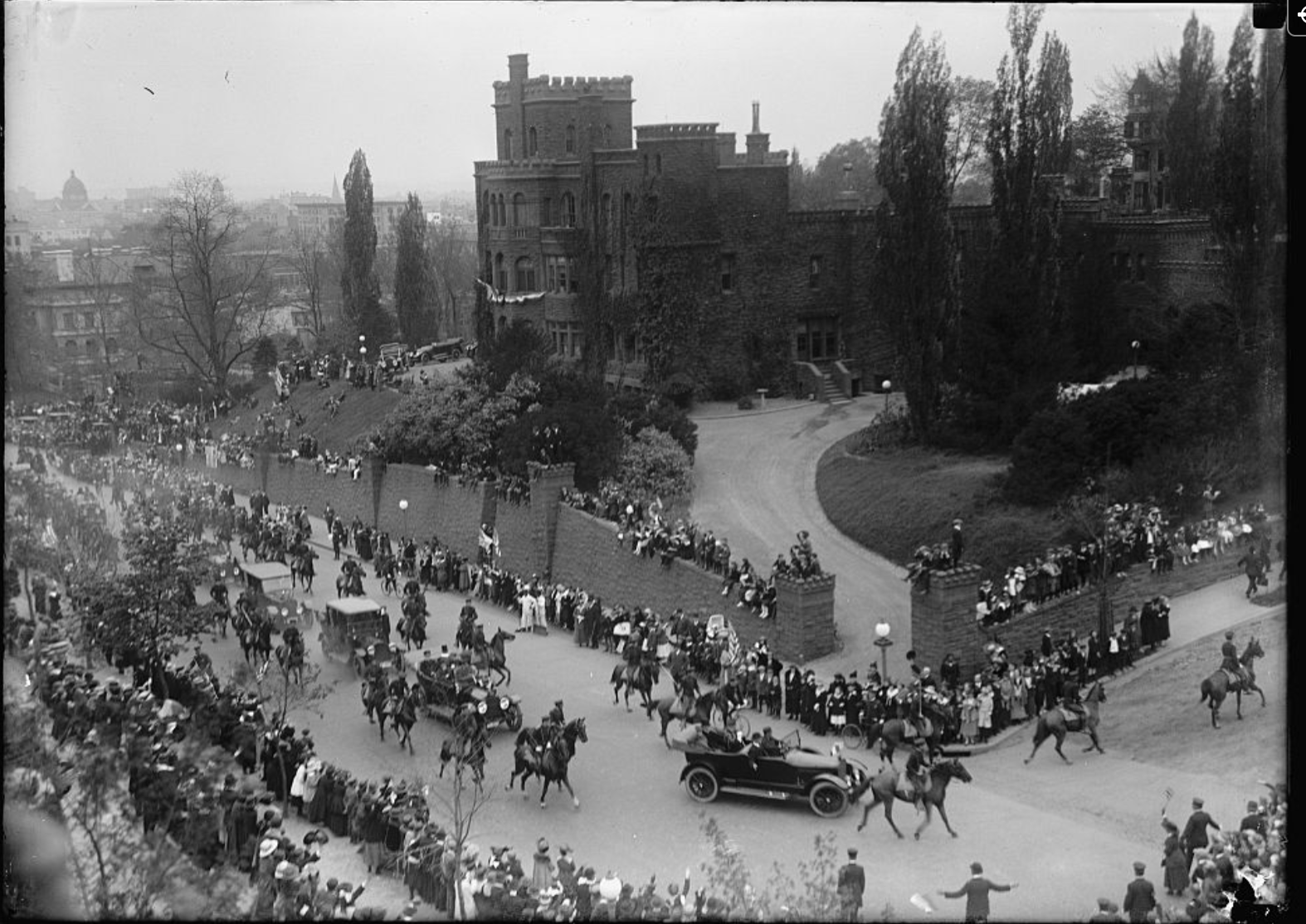
The tower at what is now the Embassy of Lithuania has an intimate view of Henderson’s other nearby creations, and their own evolutions.
There’s the Mexican embassy that became the ambassador’s residence, and then a cultural institute with history winding up its stairwell. Next to that is the Spanish embassy and residence which followed the same path, and ultimately turned itself inside out during the pandemic. From the tower room, you can see the Polish Embassy, and the Cuban, and views up and down one of DC’s most famous avenues. At one point, in another era, people standing in that room could see the Embassy of Ecuador, another Henderson vision, which is now blocked by another apartment building.
But for all these creations, only the Embassy of Lithuania has a small tower room, a seemingly whimsical addition fitting for intimate tea parties, lounging with a good book, or an afternoon spent crafting newsletters urging Congress to stand against an illegal occupation.
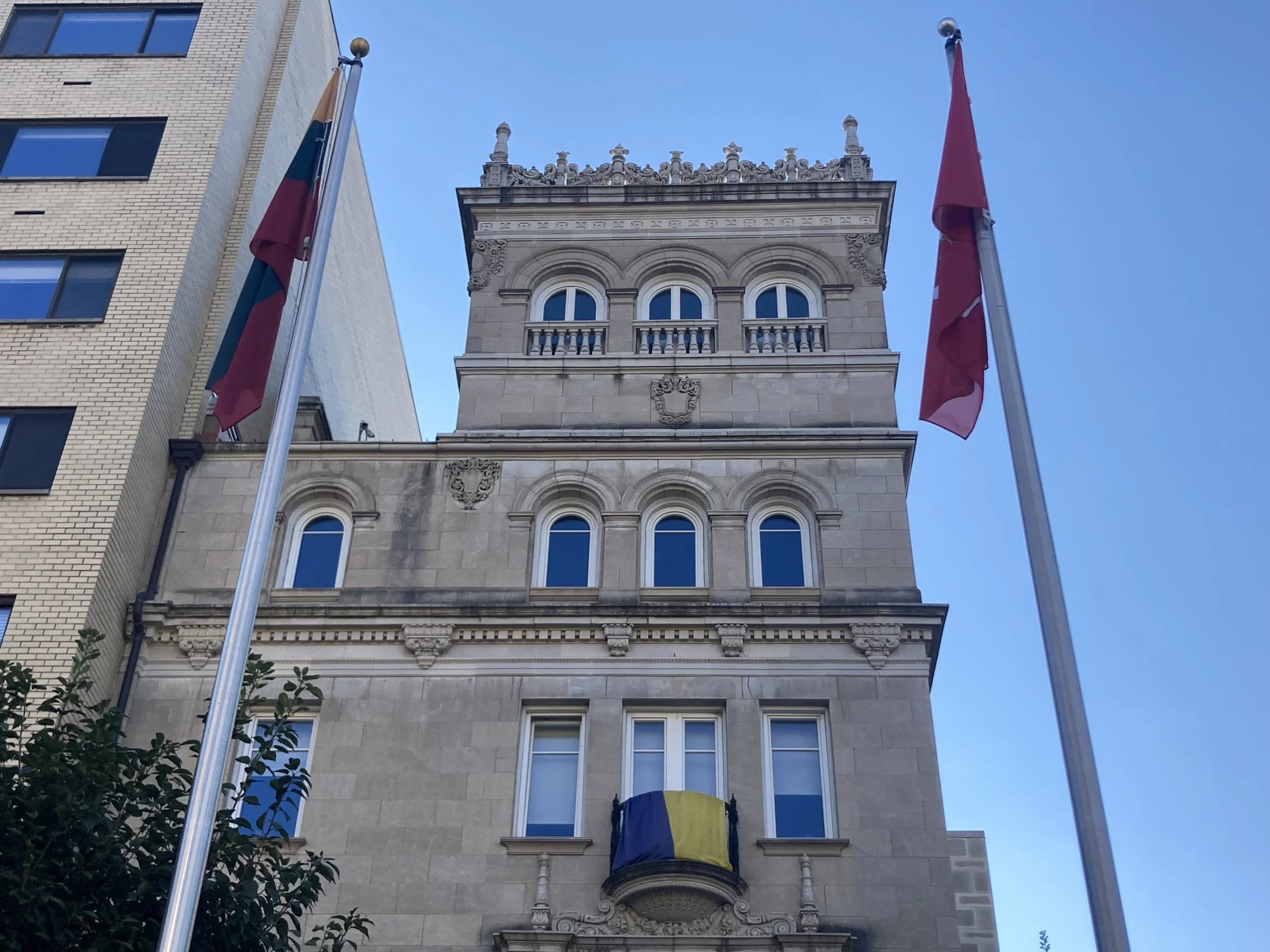
The United States first established diplomatic relations with Lithuania on July 28, 1922. At the World’s Fair in 1939, September 10, was named Lithuania National Day, and a parade of “members of Lithuanian Societies” greeted the Lithuanian minister at the Lithuanian pavilion, after which he was addressed by New York City luminaries, including then-Mayor Fiorello La Guardia. The day included the American and Lithuanian national anthems, traditional singers and folk dancers, and concluded with a “symphony of fountain, flame and fireworks.” On display were a series of five paintings, including Adomas Varnas’ “The Coronation of King Mindaugas.”
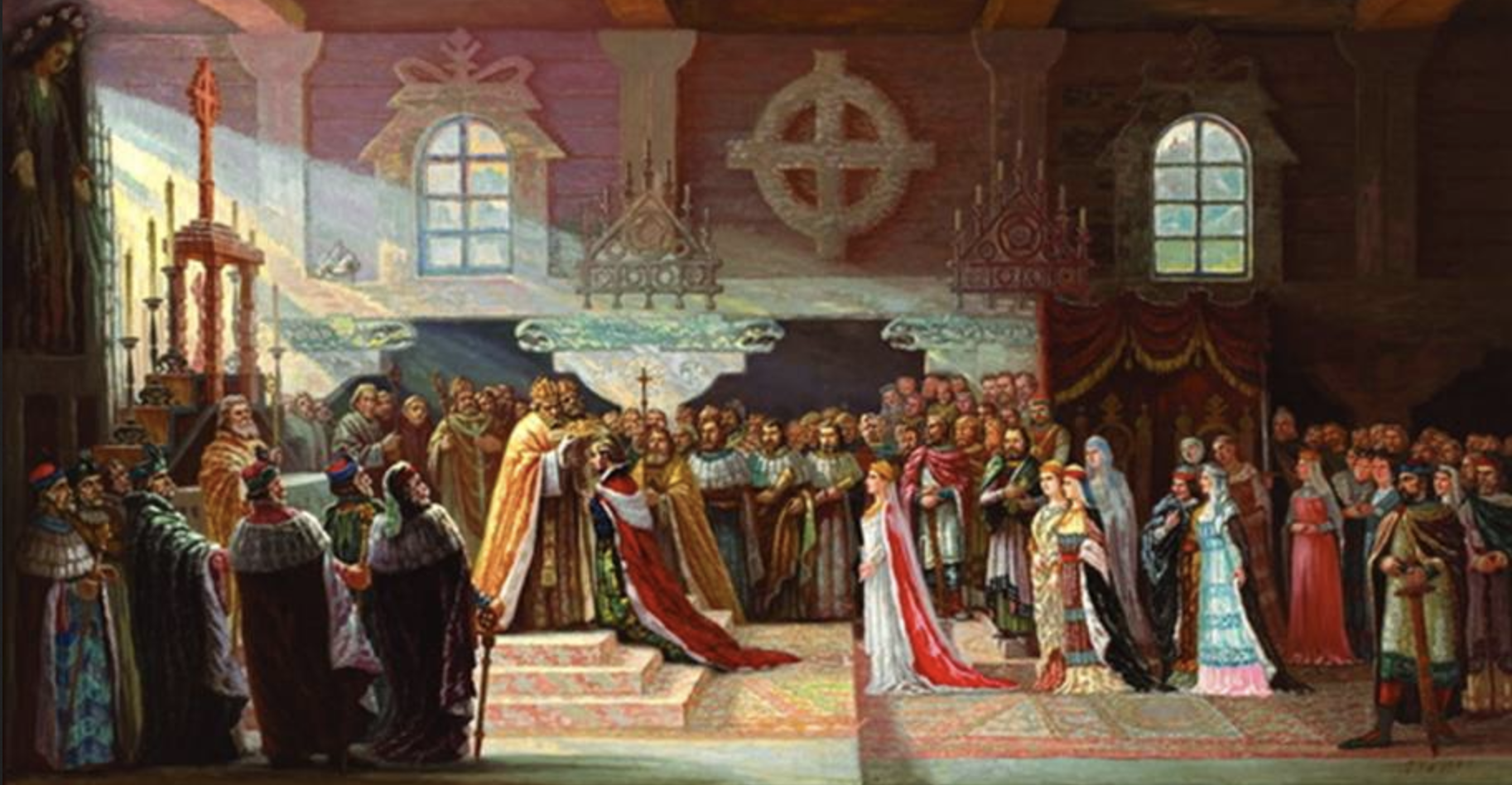
Less than a year later, the Soviet Union invaded and annexed Lithuania, Estonia, and Latvia.
The Soviet invasion in June 1940 forced the closure of the American legation in the Baltics. Because then-Secretary of State Sumner Welles refused to recognize the Baltic States’ annexation into the Soviet Union, the Lithuanian legation was allowed to remain open. The US government permitted Lithuanian representatives accredited by the last independent government to remain in the United States with diplomatic status. Per the State Department, “The United States never recognized the forcible incorporation of Lithuania into the Soviet Union, and it views the present Government of Lithuania as the legal continuation of the interwar republic.”

And so the embassy stayed open through the war years and the Soviet occupation of Lithuania, the Nazi Germany invasion, and later re-occupation of the Soviet Union, when Lithuania had no legitimate government to consult and no official funding for its legation. It stayed open due to donations from Lithuanian Americans, and access to Lithuanian gold deposited in the US Federal Reserve, which could only keep so many of the lights on. The tower, the building it sat upon, and the people inside, fell into a state of neglect.
“There are no secretaries to answer the phones, no butlers to answer the doors, no chefs in the kitchen, maids in the parlor, chauffeurs in the garage,” wrote John Sherwood in The Washington Star in July, 1978, as the years of the Soviet occupation wore on. “The old mansion is dark and empty; too hot in the summer, and too cold in the winter.”
Sherwood referred to then-Ambassador Stasys Bačkis as “an aging, sad-eyed man without a country…haunted by what was – still concerned over matters that, realistically speaking, are no longer matters of his concern.” Rather than rotating out in three- or five-year cycles as is often the case with ambassadors, Lithuanian ambassadors in those days stayed in the post until they died. Simply, they could not return home, and had no government to send replacements.
During those years, the ambassadors’ main function was reminding Congress of the illegal occupation, writing a series of bulletins to agencies of the US government with titles like The Lithuanian Situation, Lithuania’s Occupation by the Soviet Union, and The Story of Captive Lithuania.
Those bulletins were written as the years passed, as the Henderson castle was torn down. They were written as an apartment building, calling itself “the Little Apartment House Around the Corner,” went up where 2620 once stood, and offered studio apartments for $115 a month, or one bedrooms for $137.50. (Things change, DC renters. What can you do?)
Through it all, the embassy marked Independence Day every year without fail.
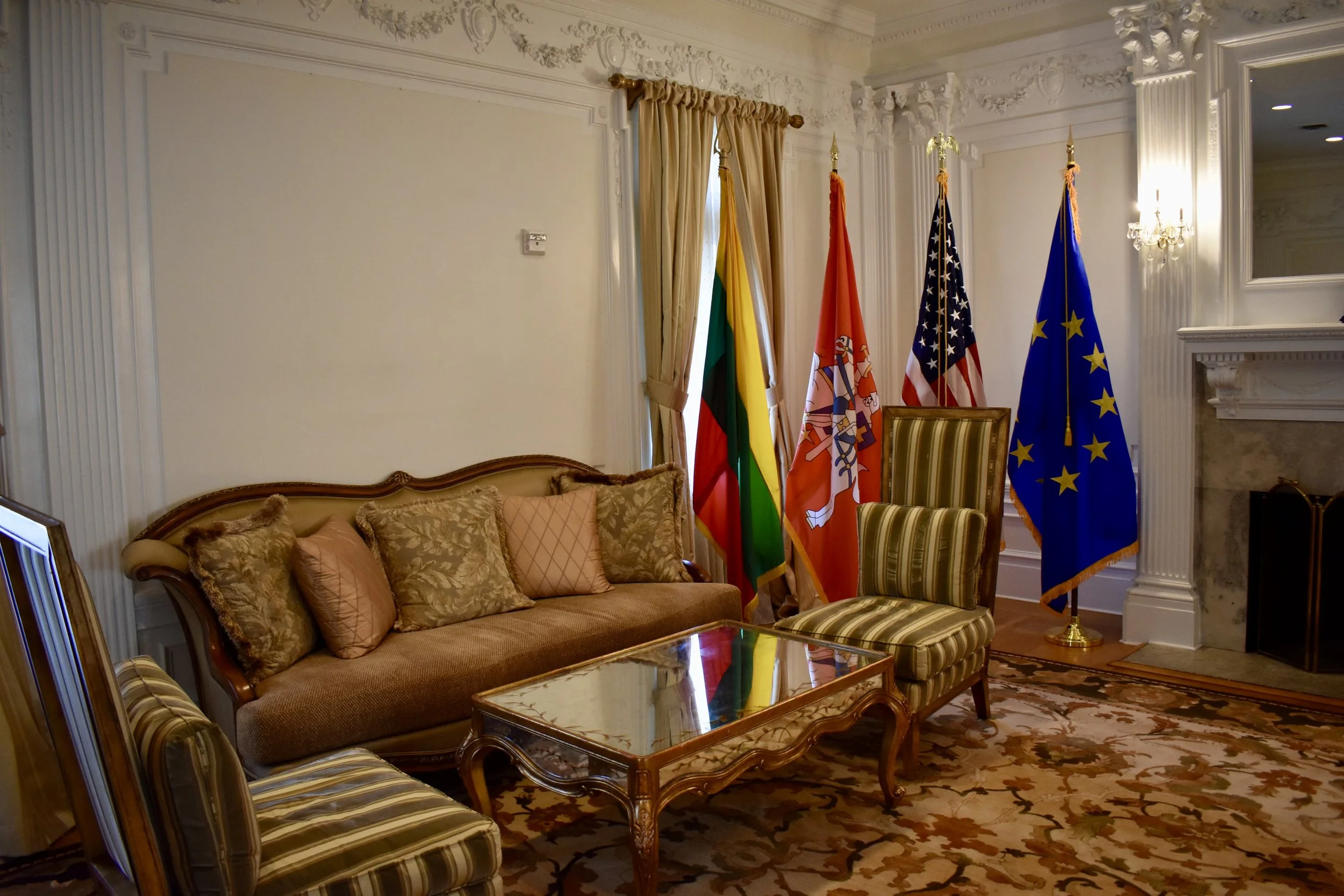
In 1990, as the Soviet Union was crumbling, Lithuania was the first republic to declare independence on March 11, 1990; a referendum was held on February 11, 1991 and independence was formally re-established. The embassy was renovated, the gardens were removed in favor of parking and a basketball court; an addition of the security fence that greets visitors today, new plumbing, heating and cooling, and more.
Long used for storage, the interior of the tower room was restored in 1995. During renovations, Varnas’ painting was discovered, and promptly hung in the ambassador’s office until it could be restored. It’s no longer there, but equally impressive work by Lithuanian artists is on display throughout the embassy’s parlor, library, and public areas.
Importantly, since the embassy no longer had to be the main protector of Lithuania’s artifacts, the embassy’s archives were shipped back to Lithuania’s National Archives and the Ministry of Foreign Affairs, or to the Lithuanian Research and Studies Center in Chicago.
Among those artifacts was the former Ambassador’s desk at which Petrušonis, as a young staffer on a previous tour, sat in the basement during 2001, checking the embassy’s mail, which was processed at the same mail sorting facility as the Senate’s, for anthrax. “It’s in a museum now,” he says with a self-deprecating chuckle.
Things change. What can you do?
